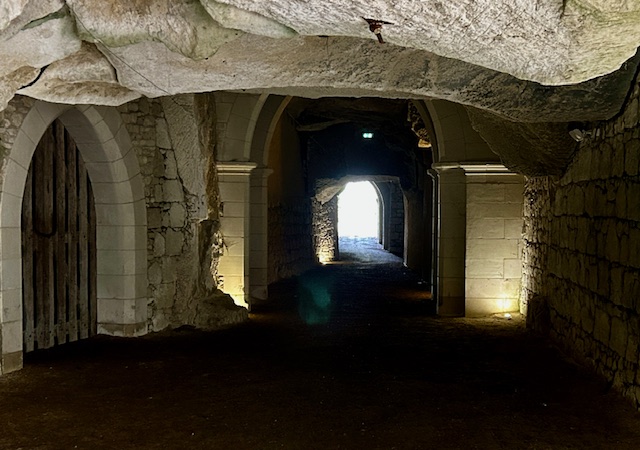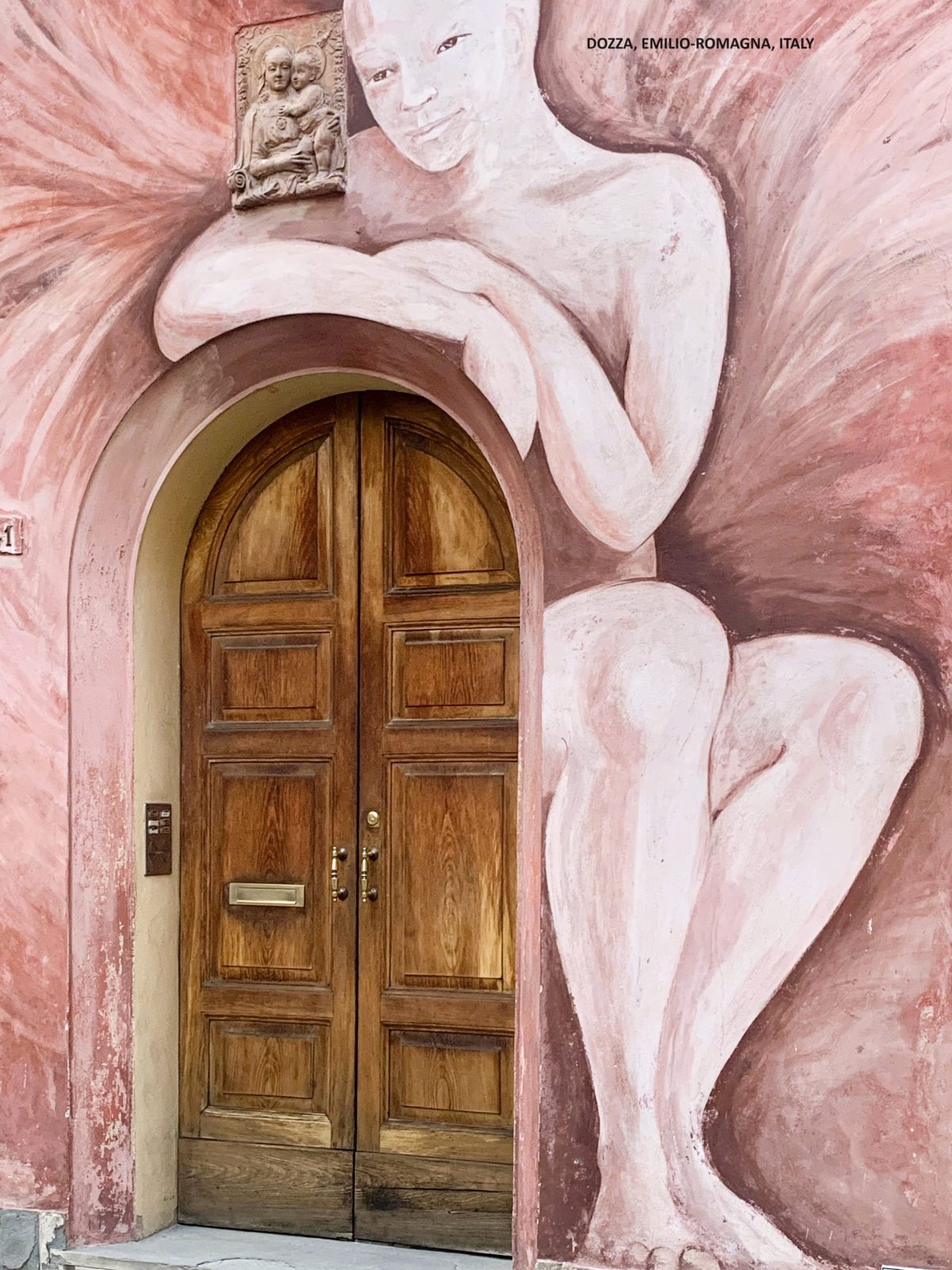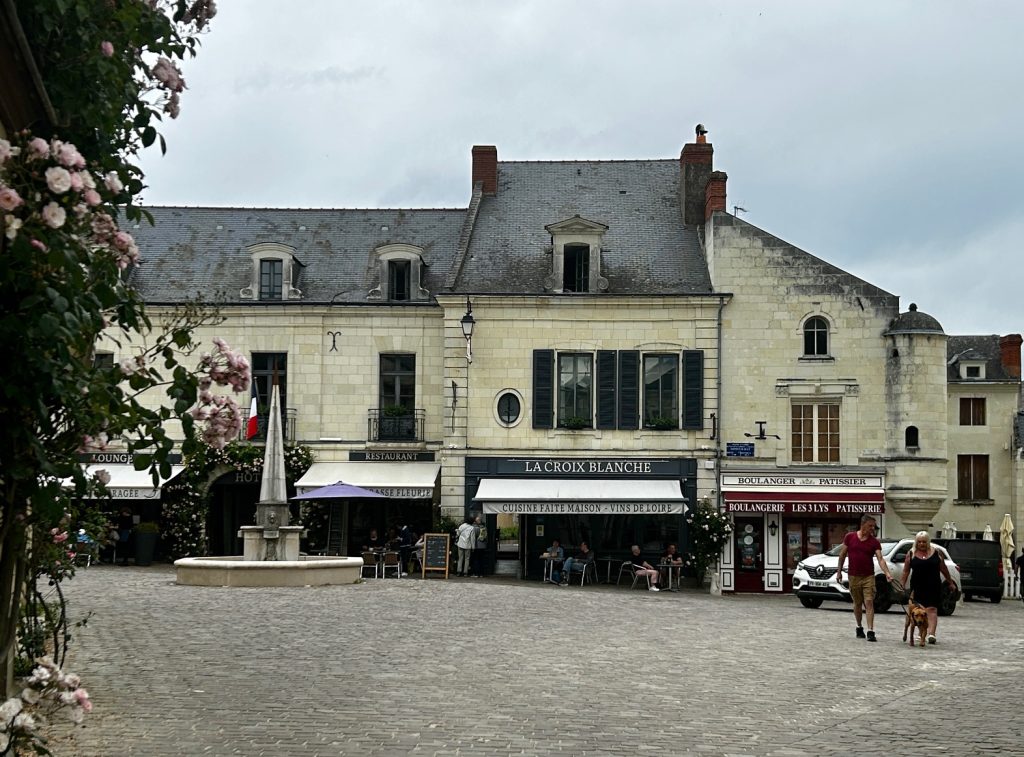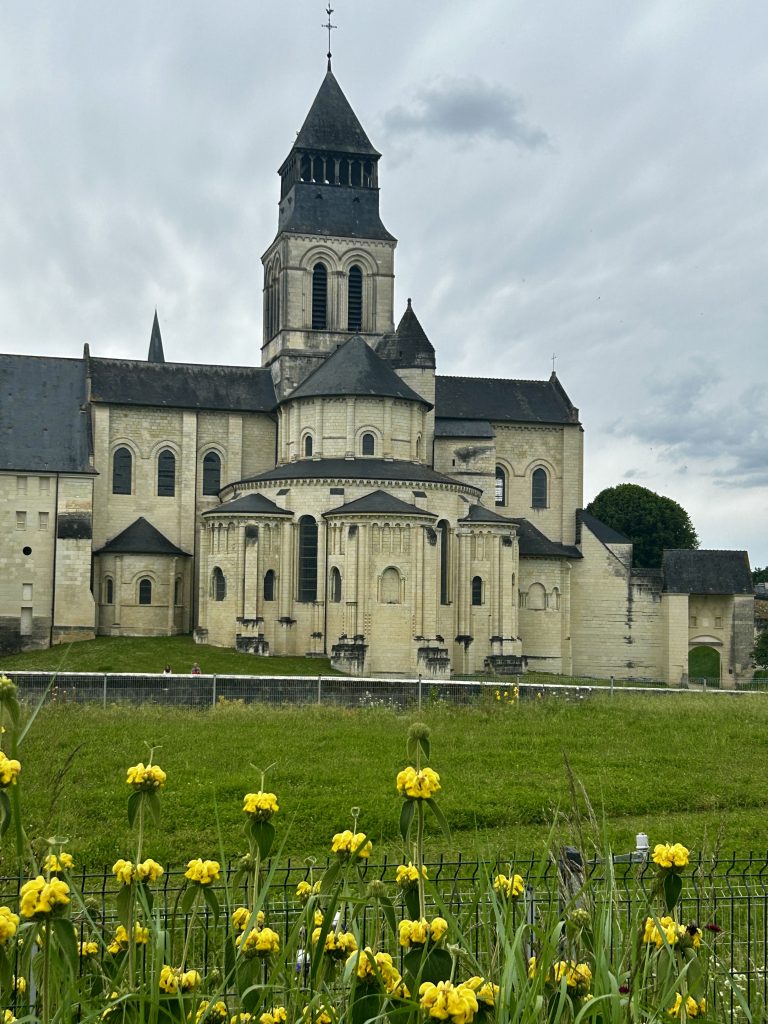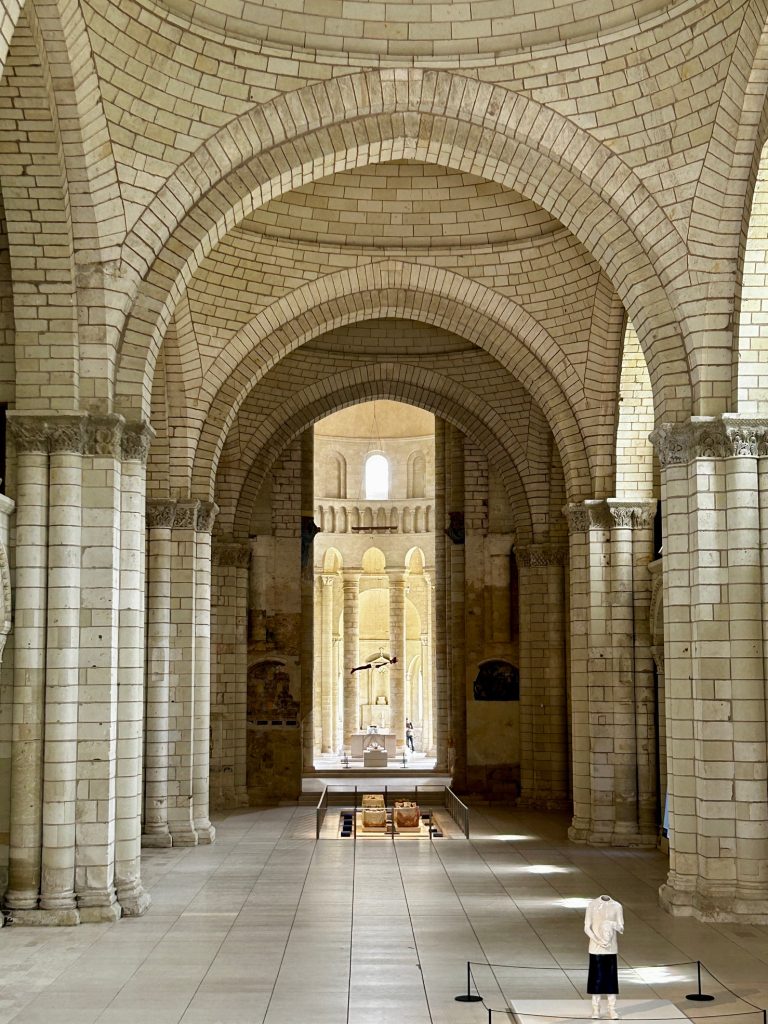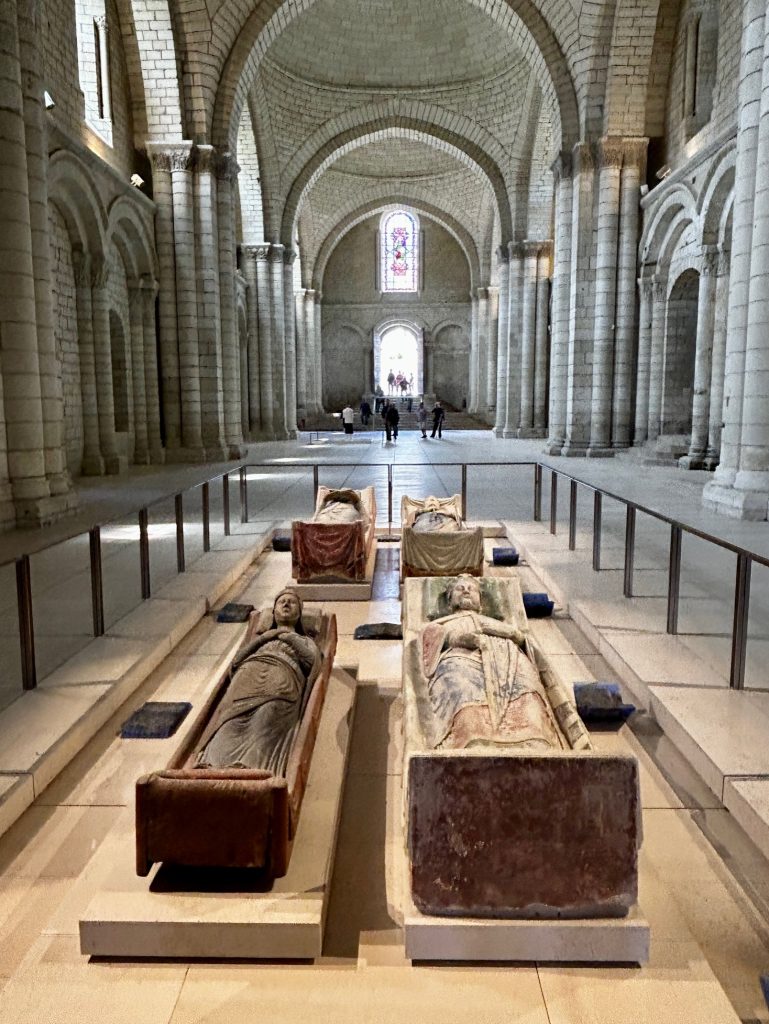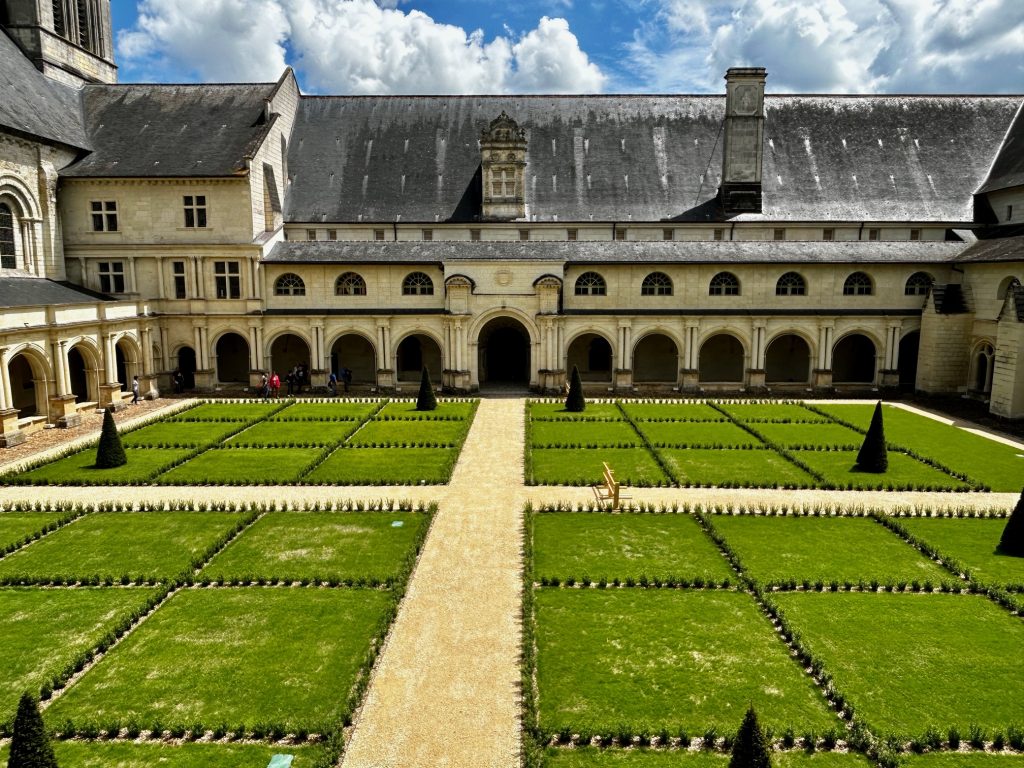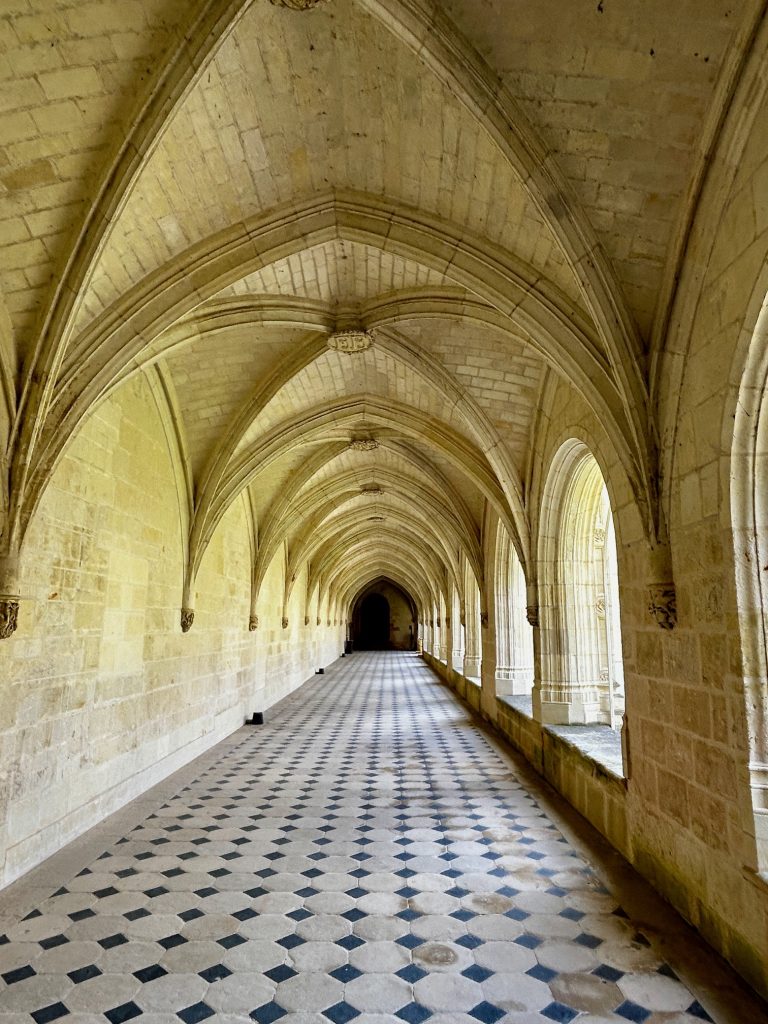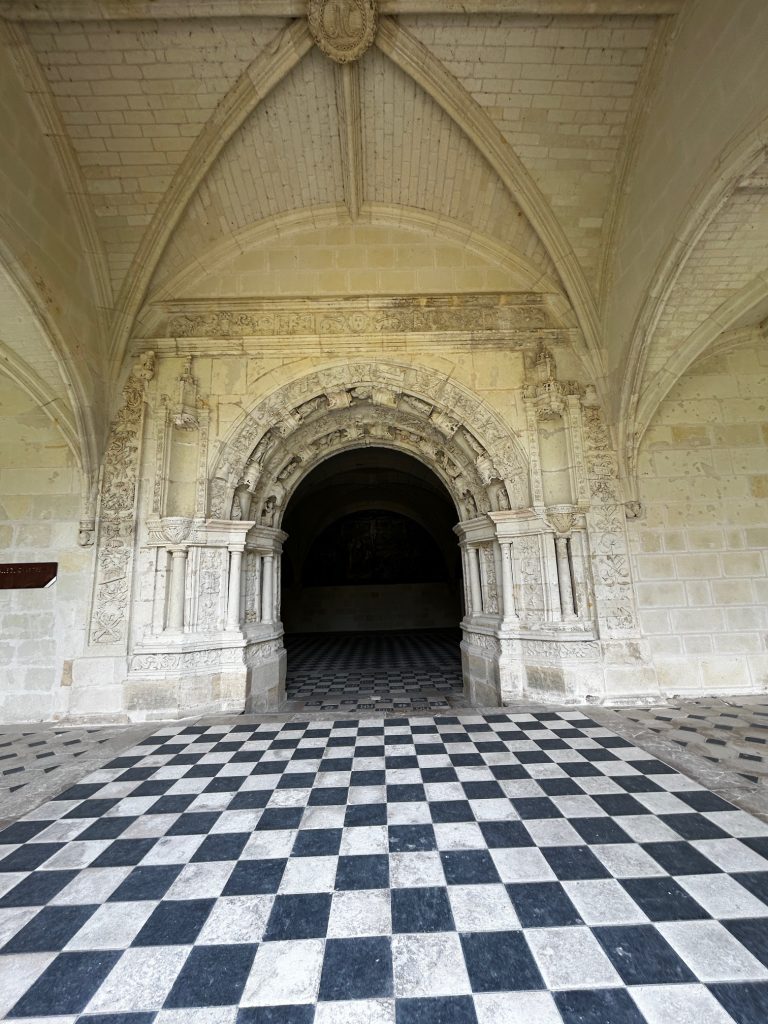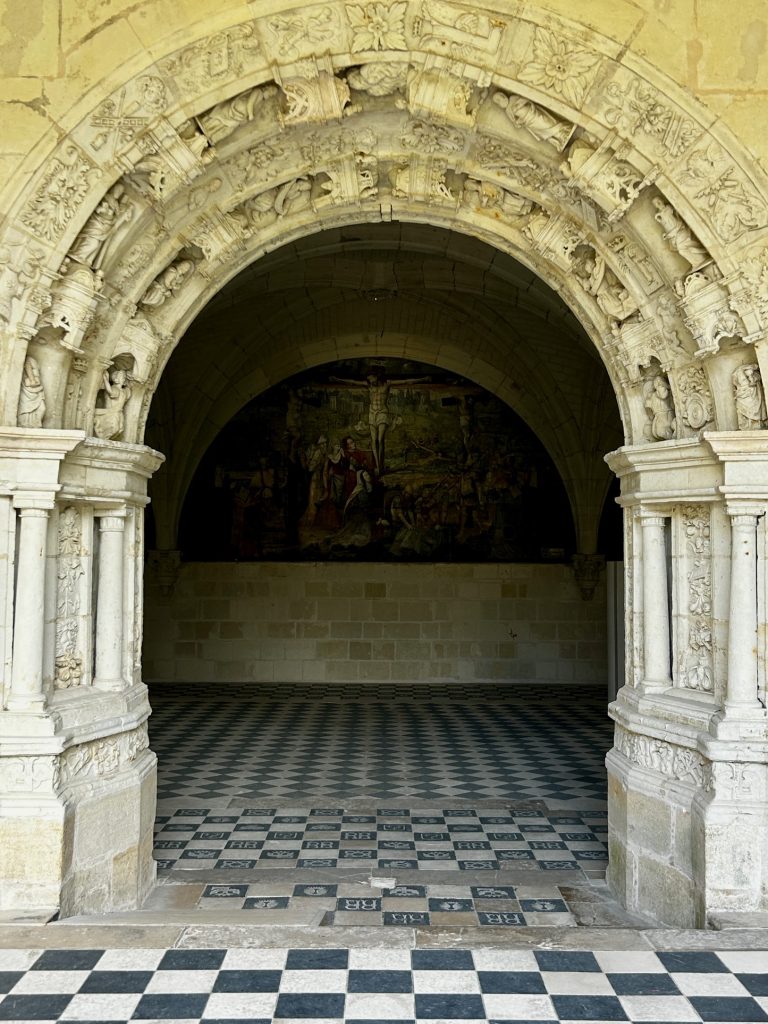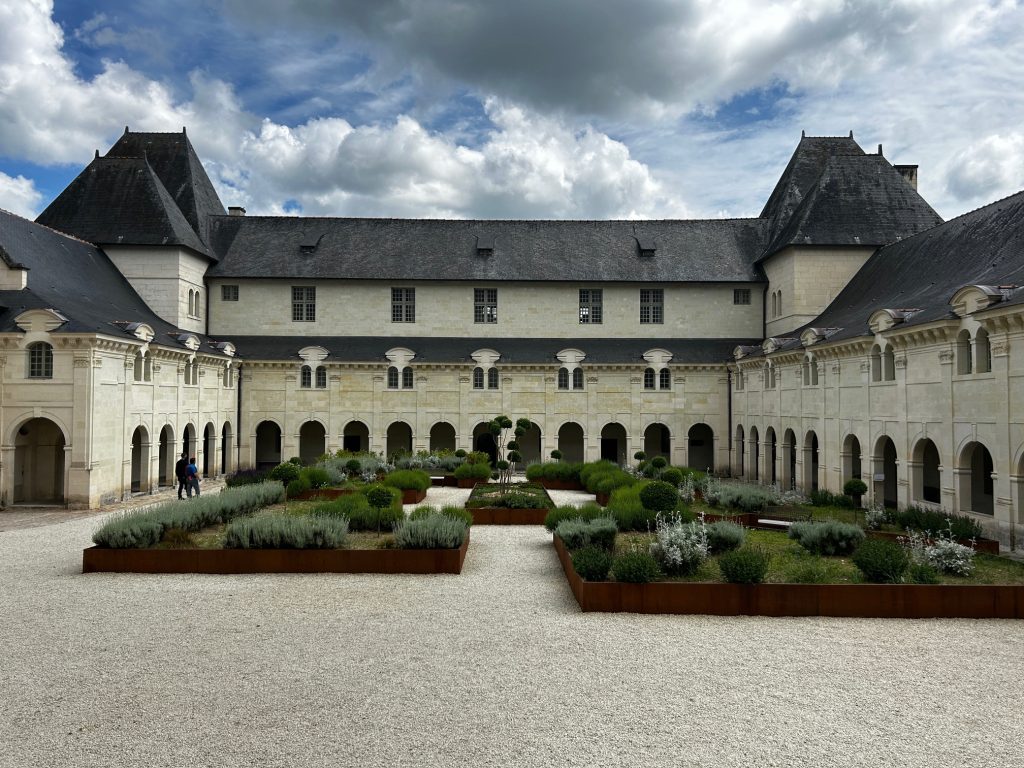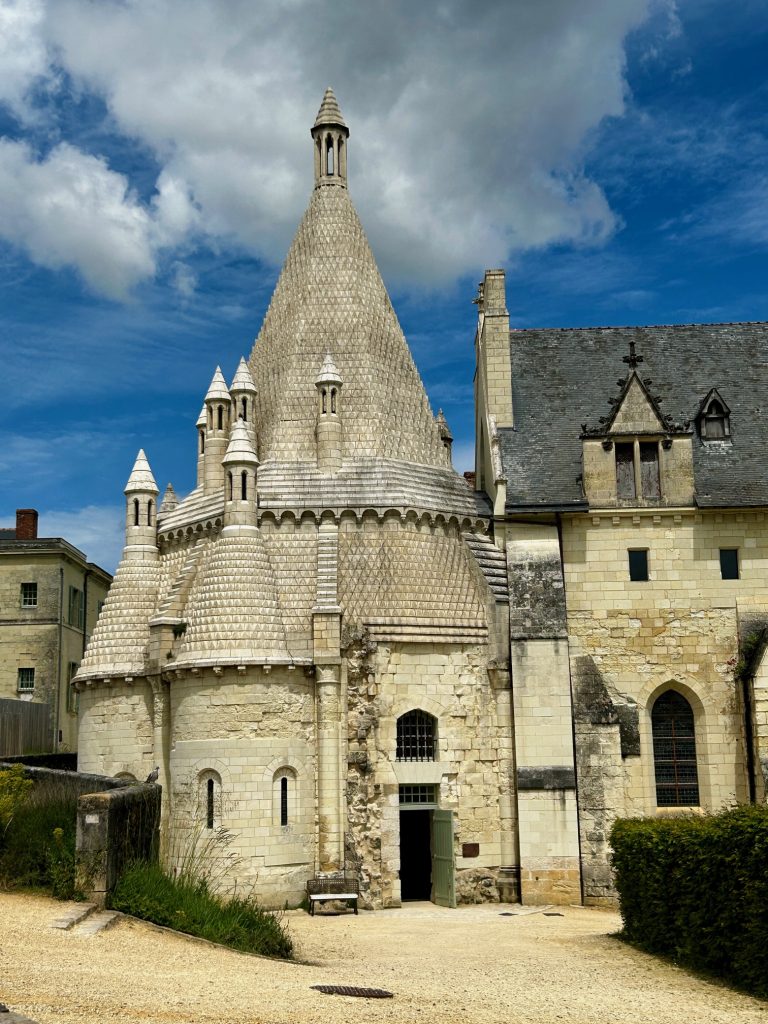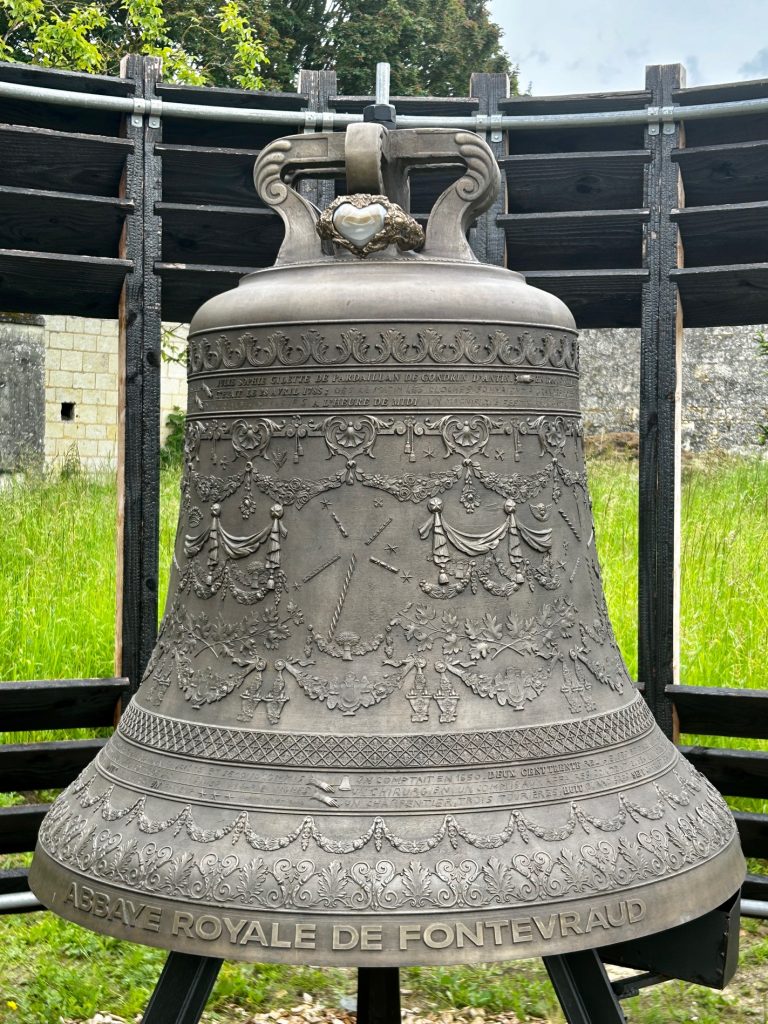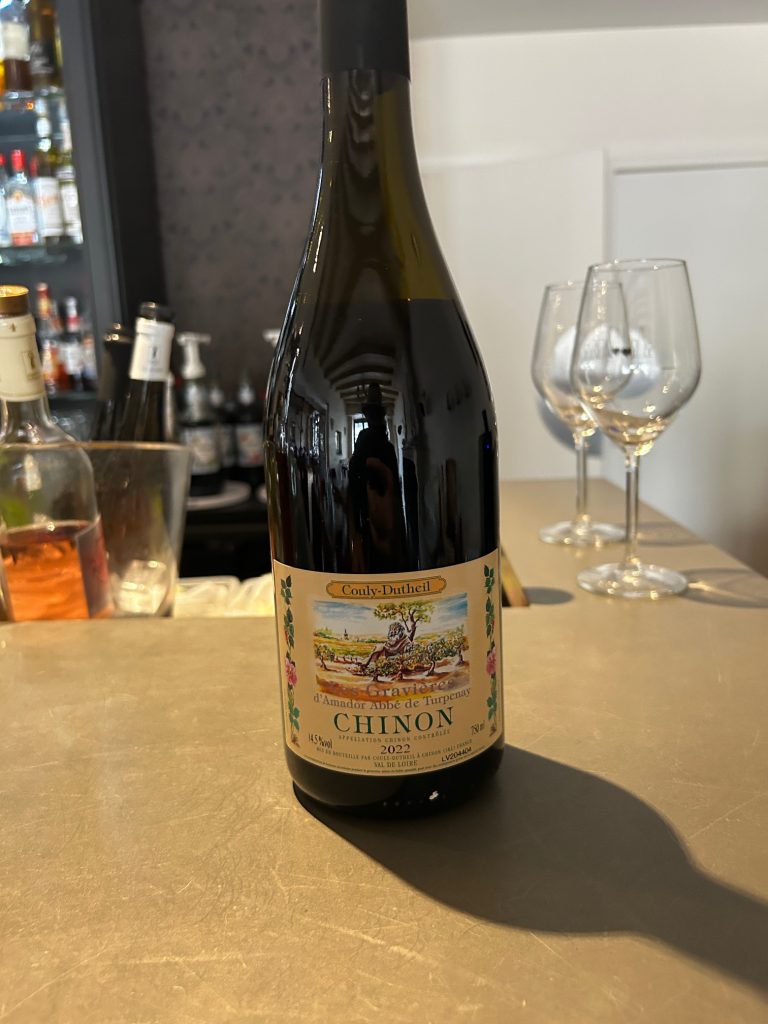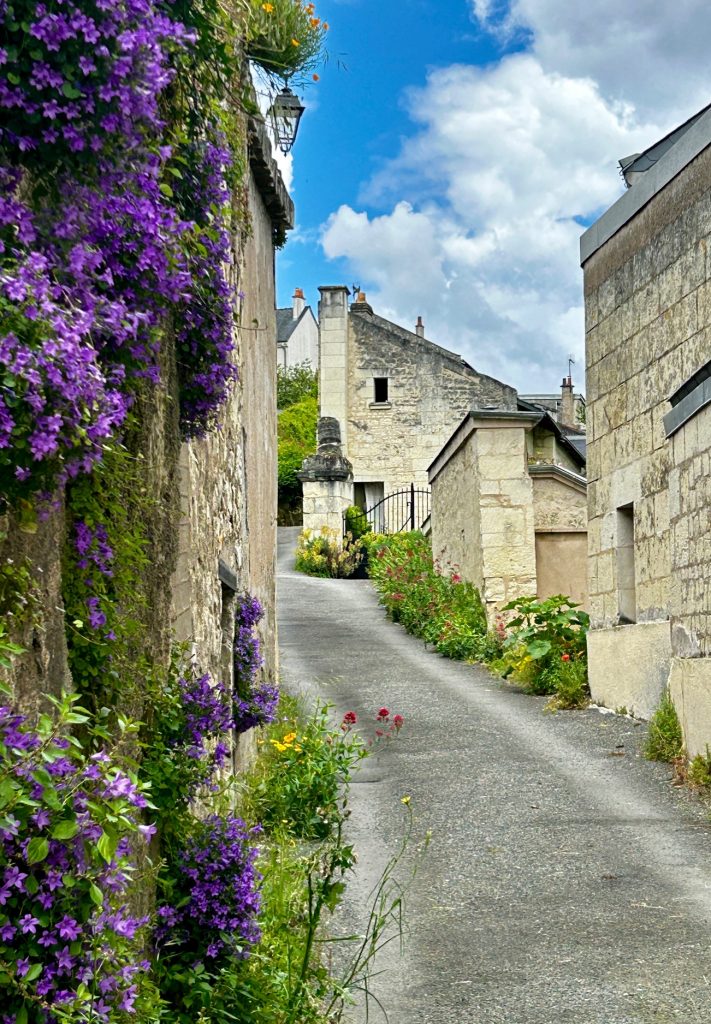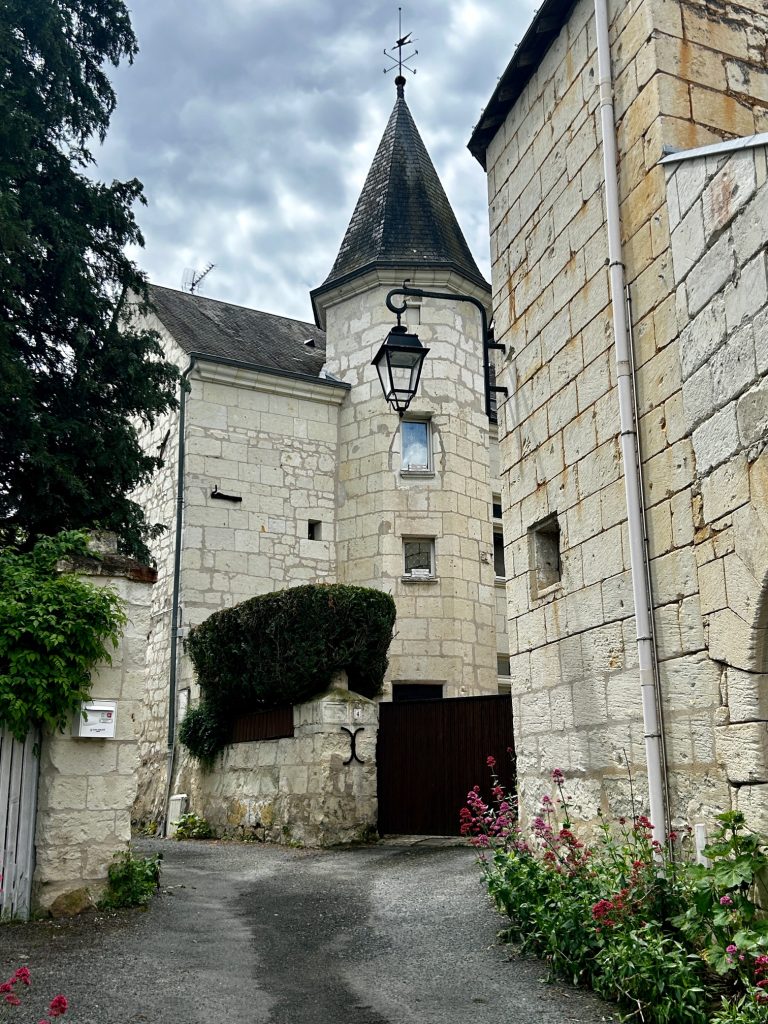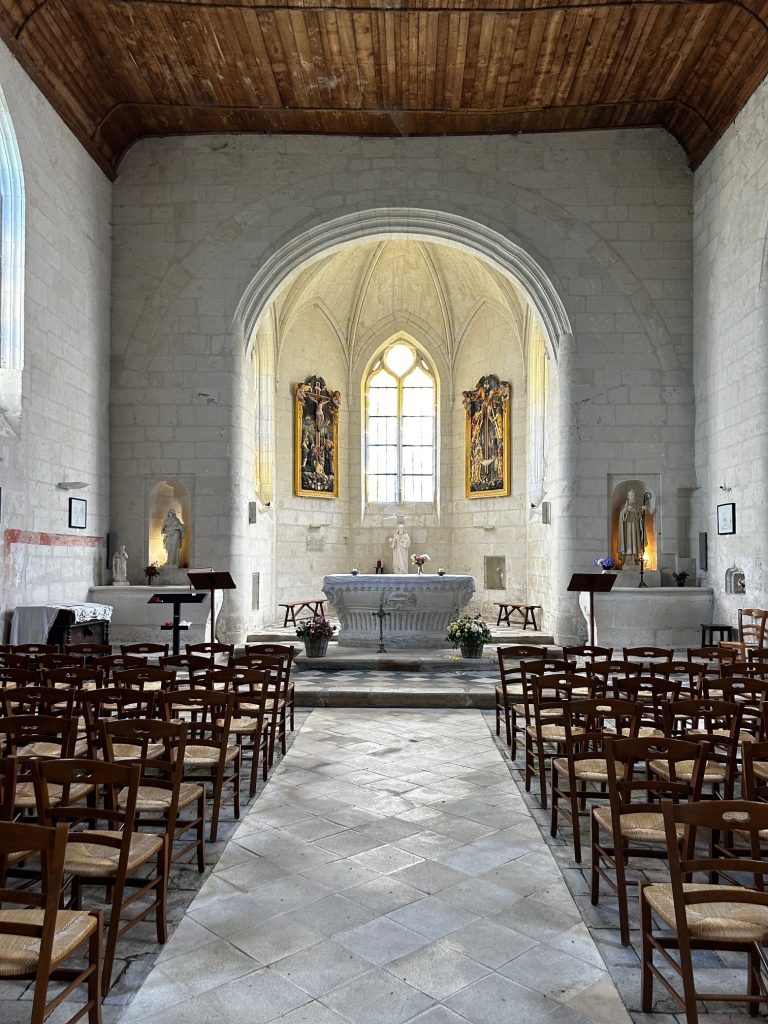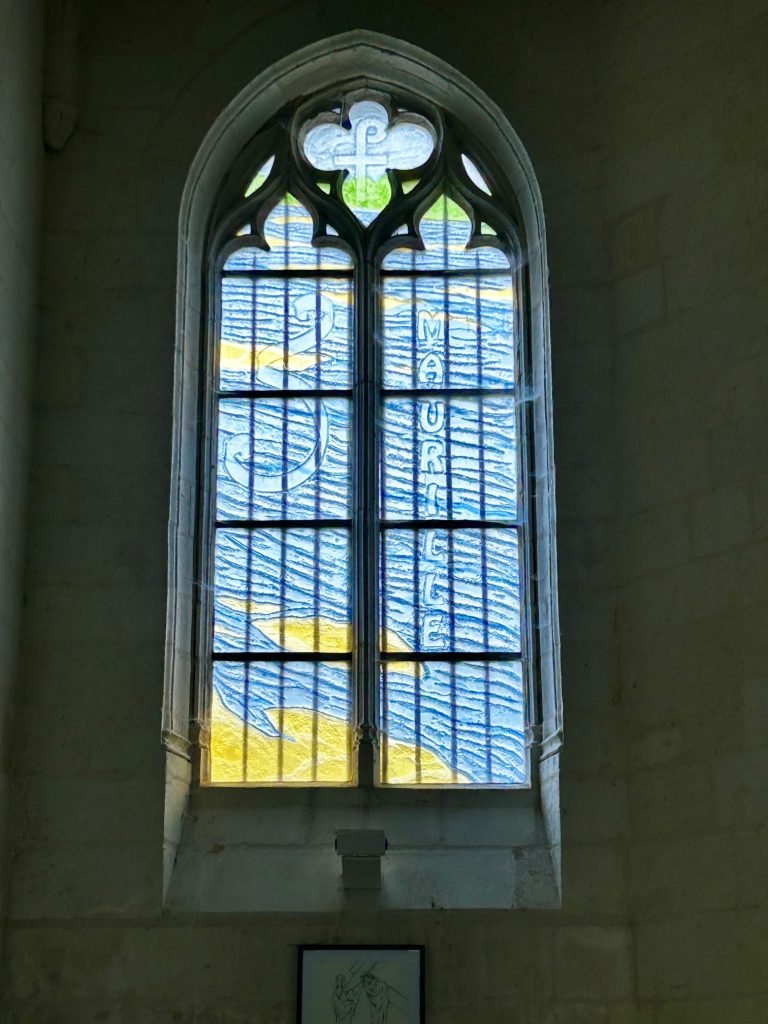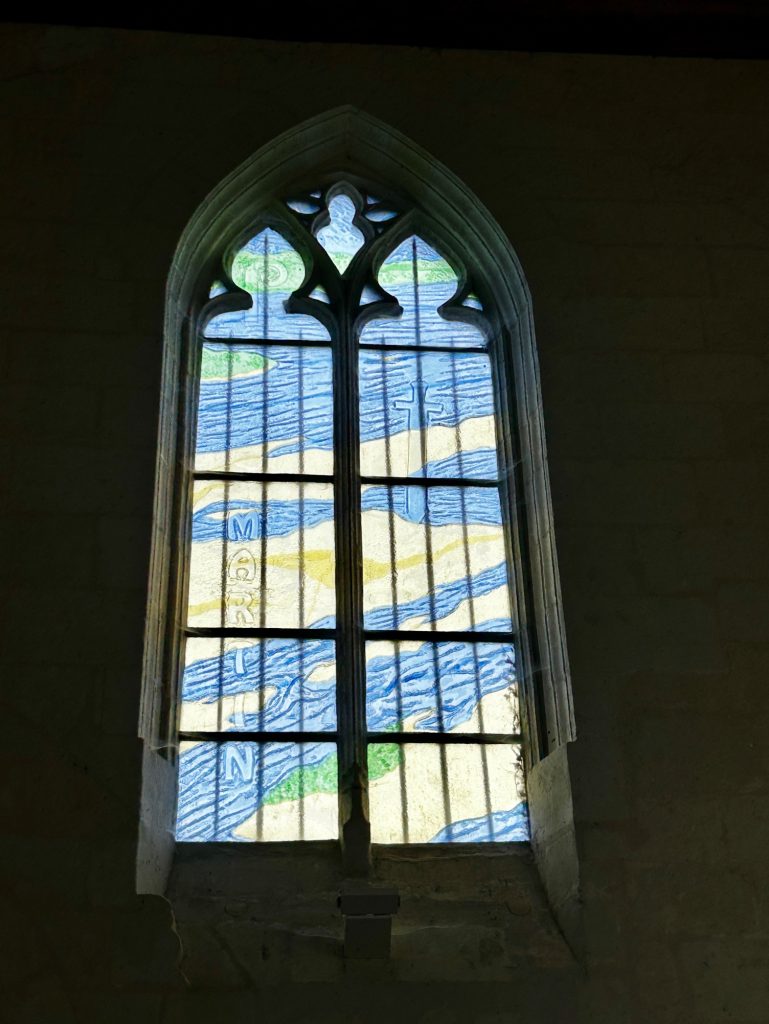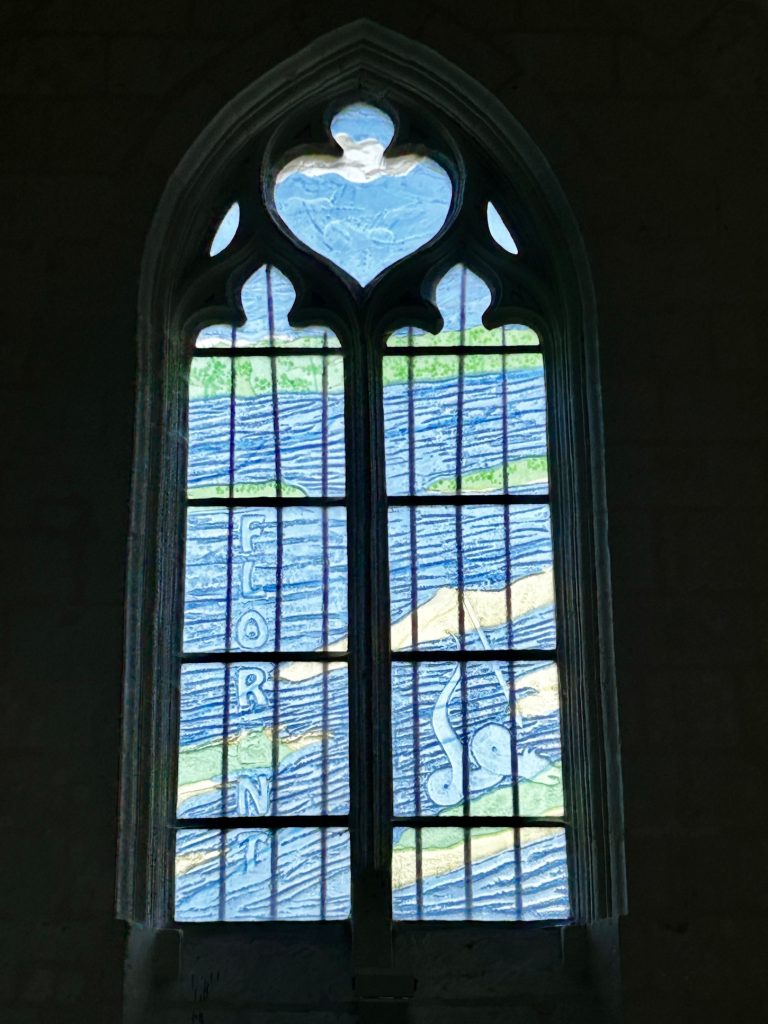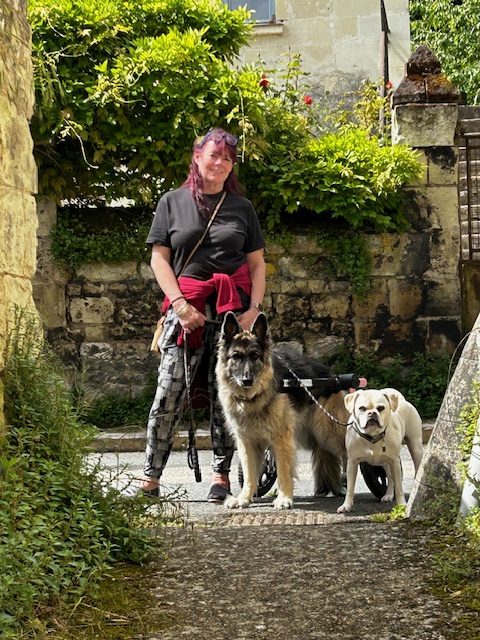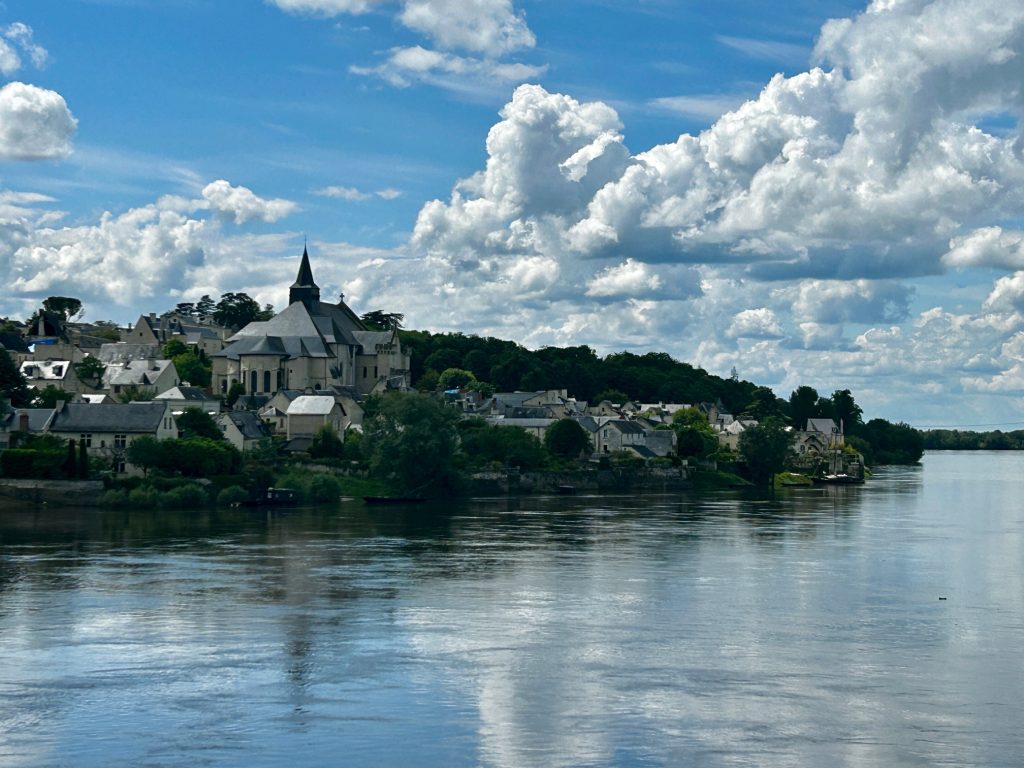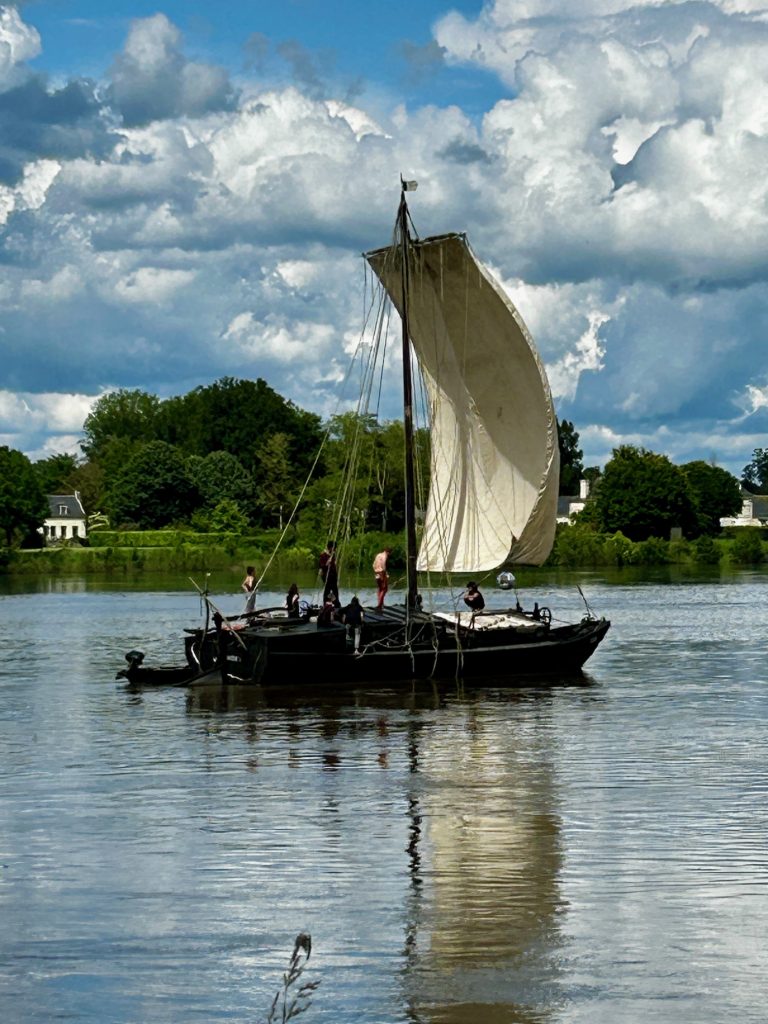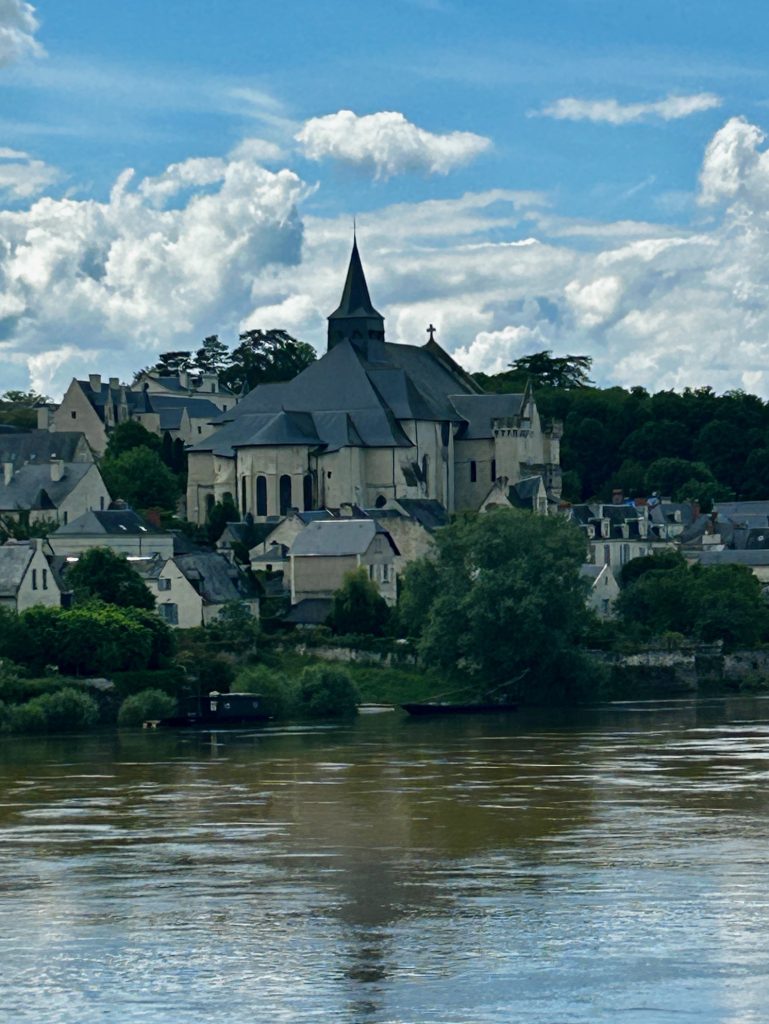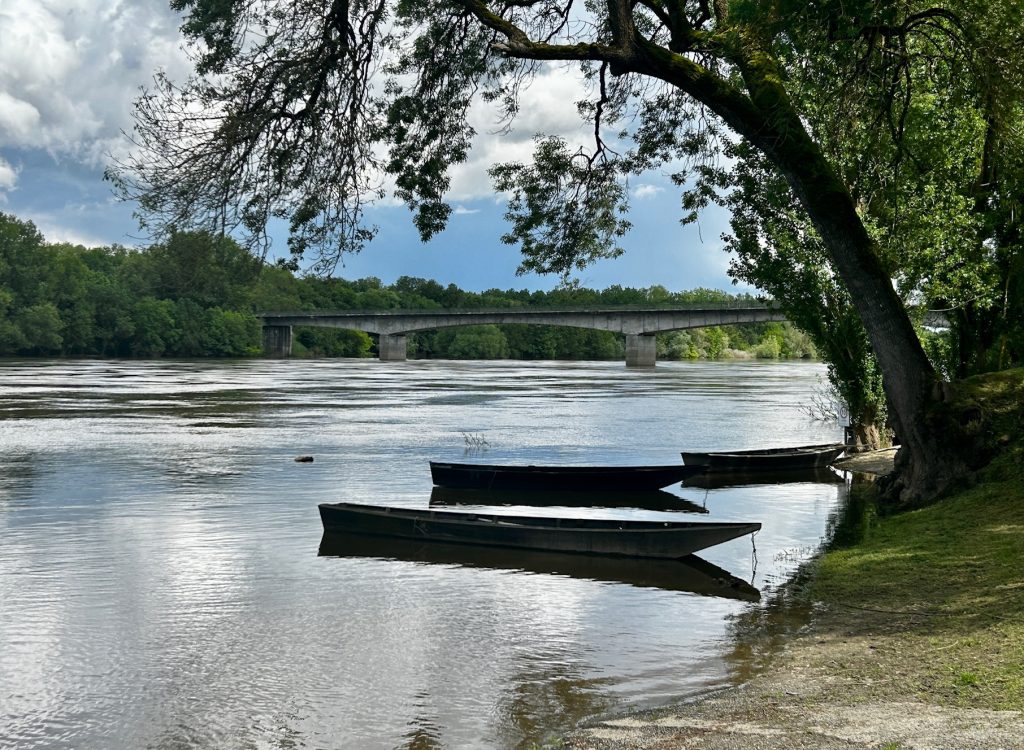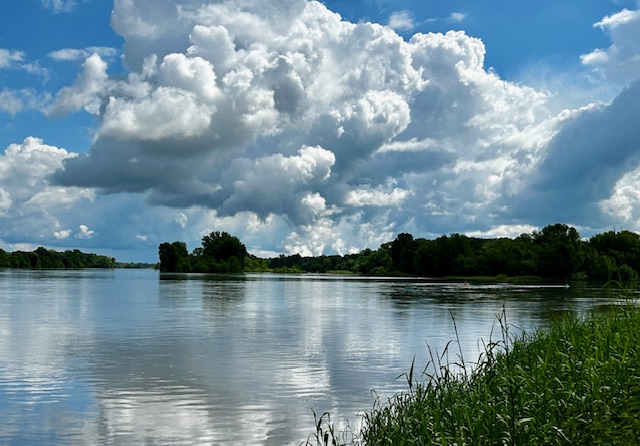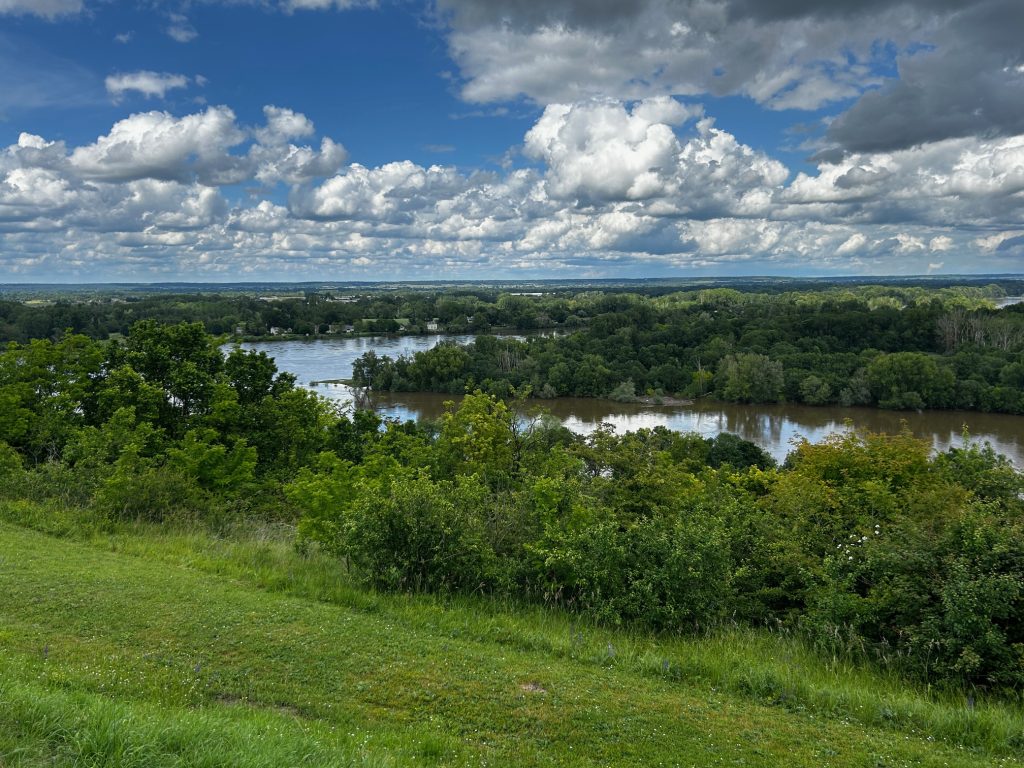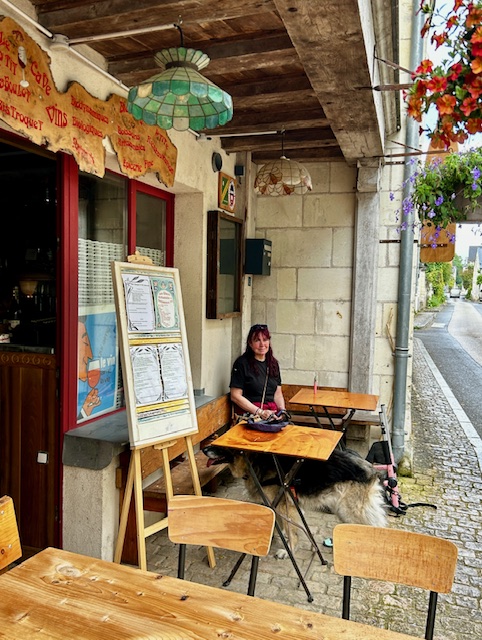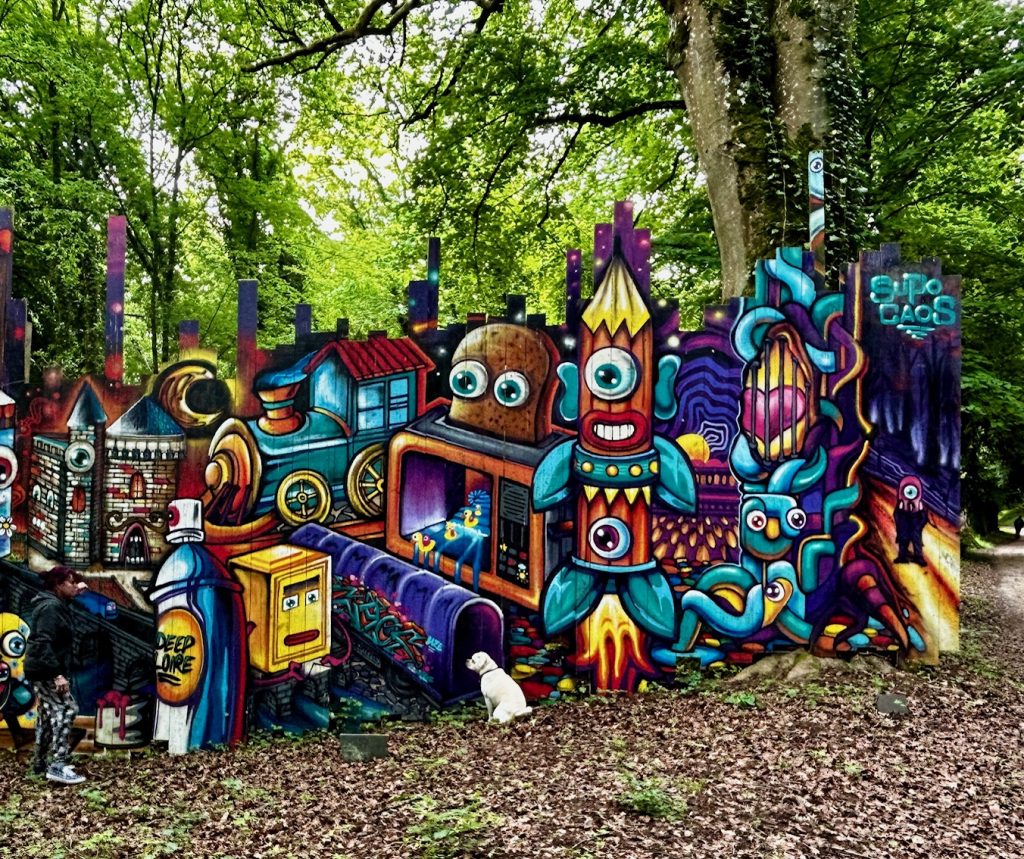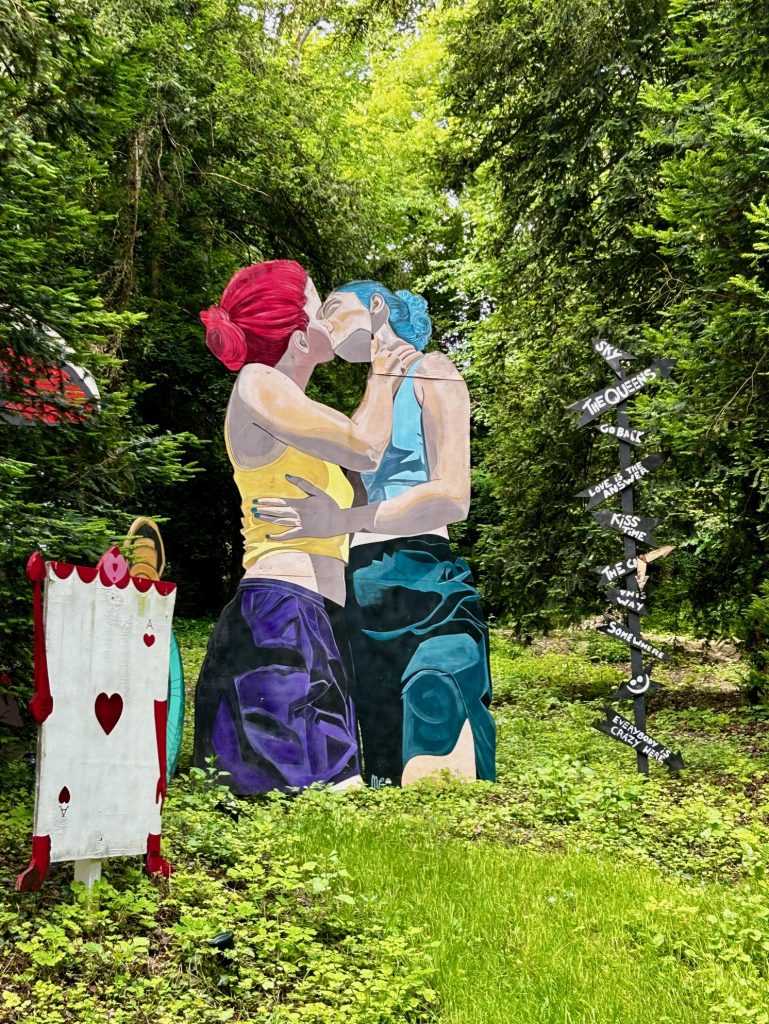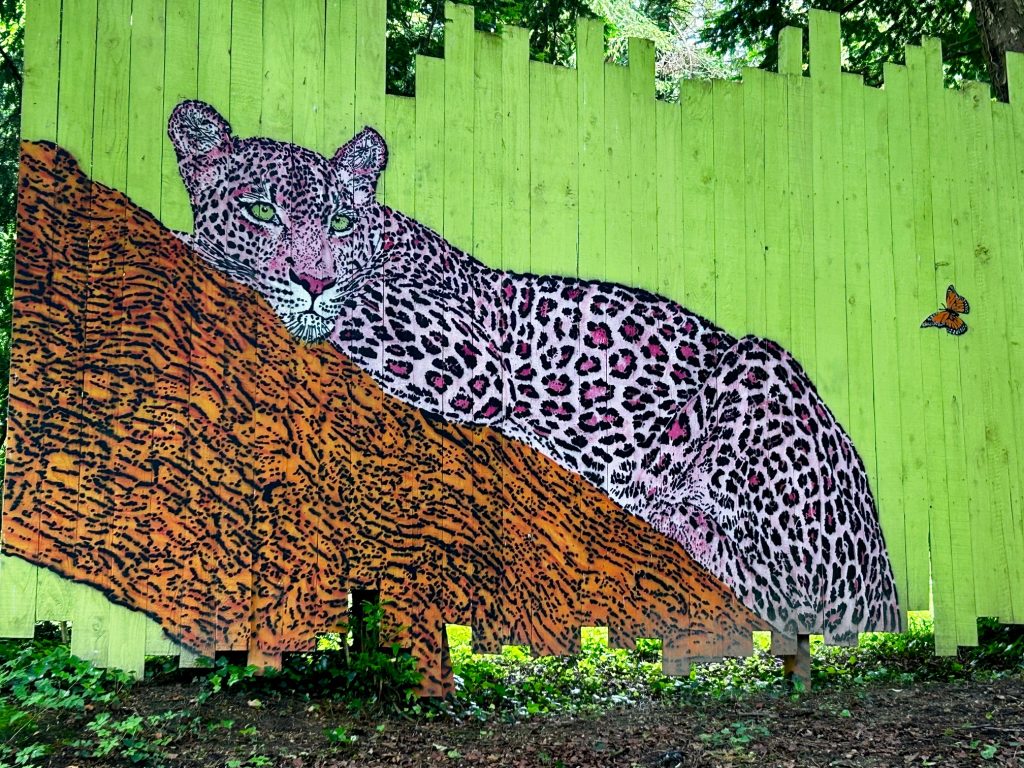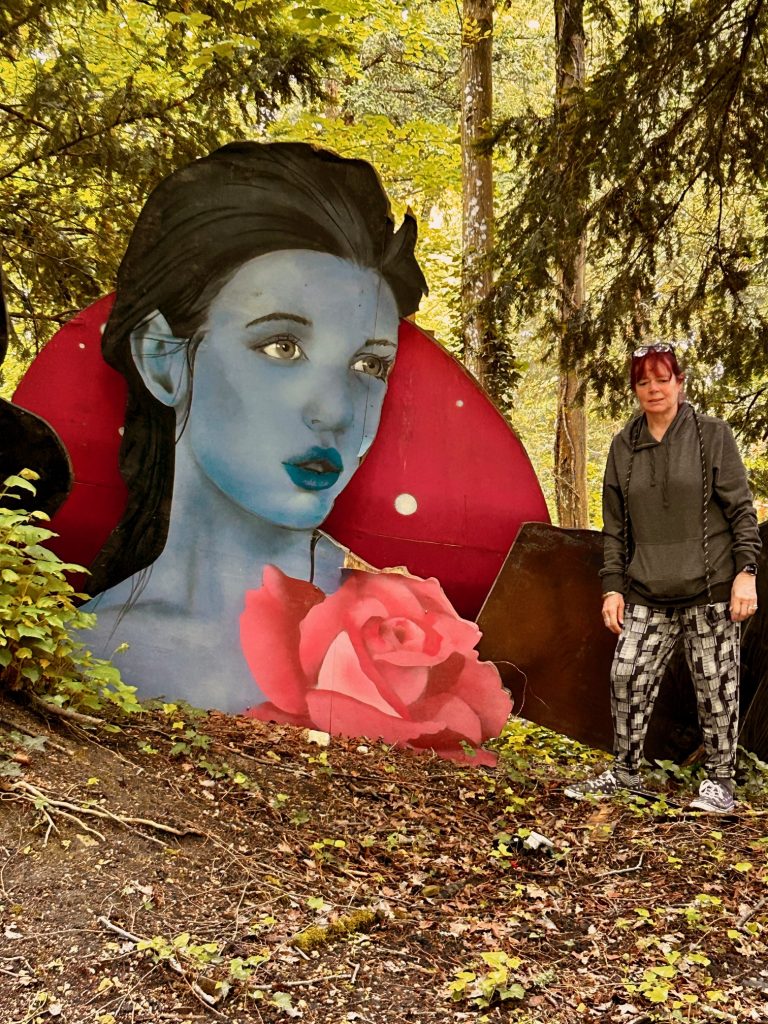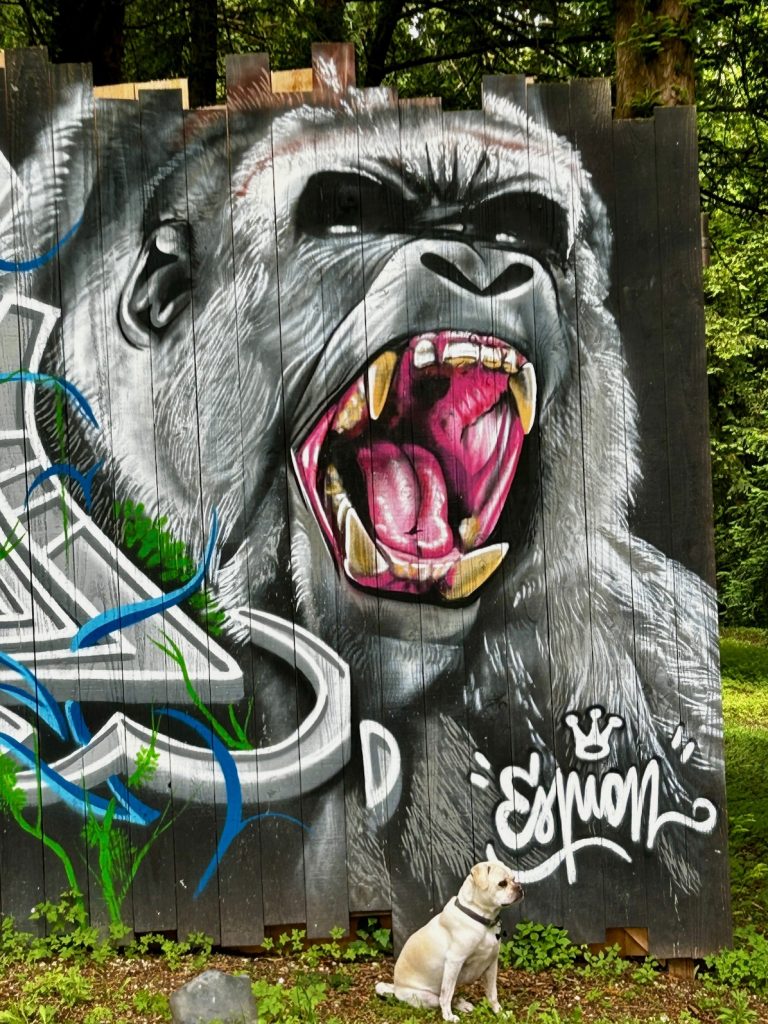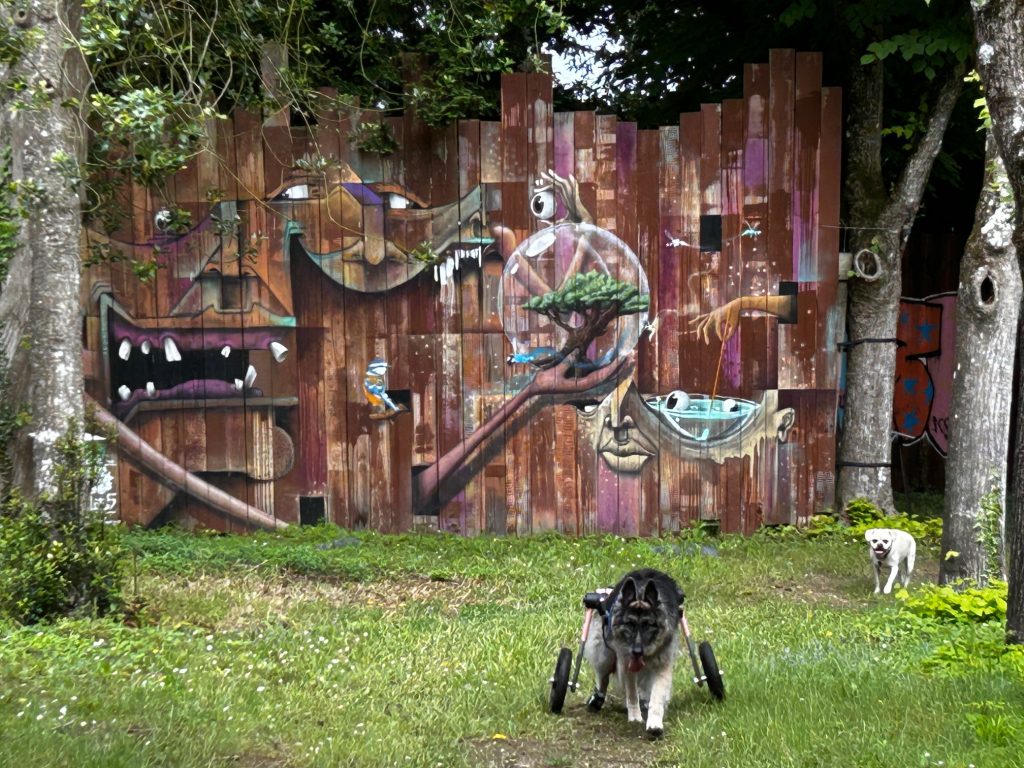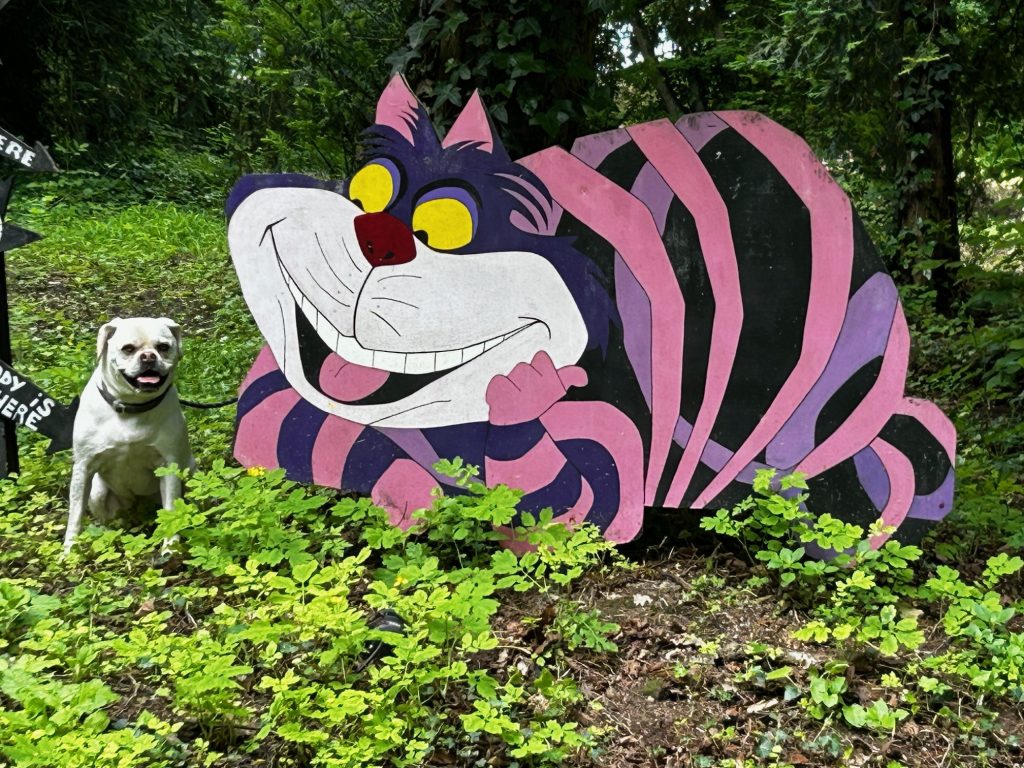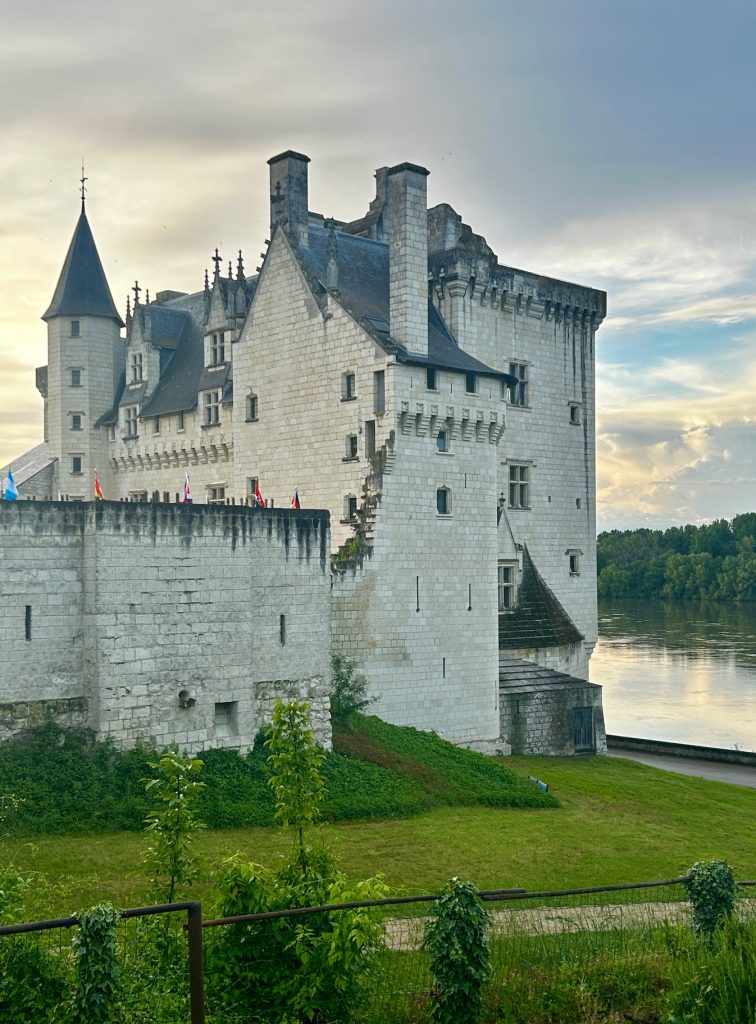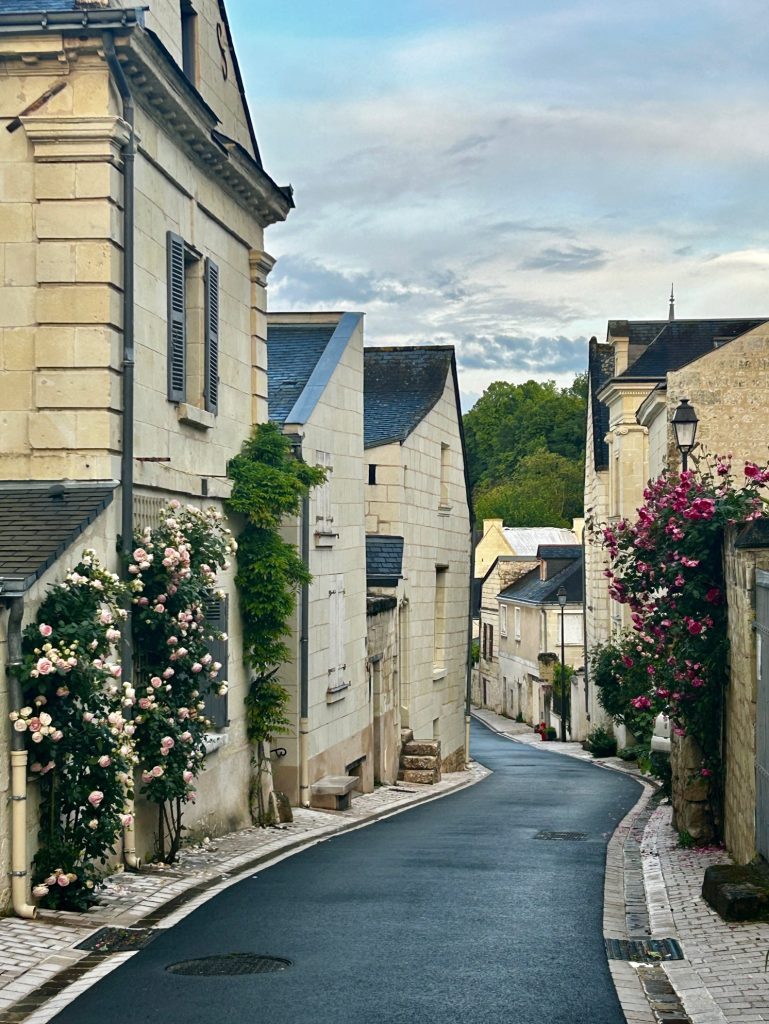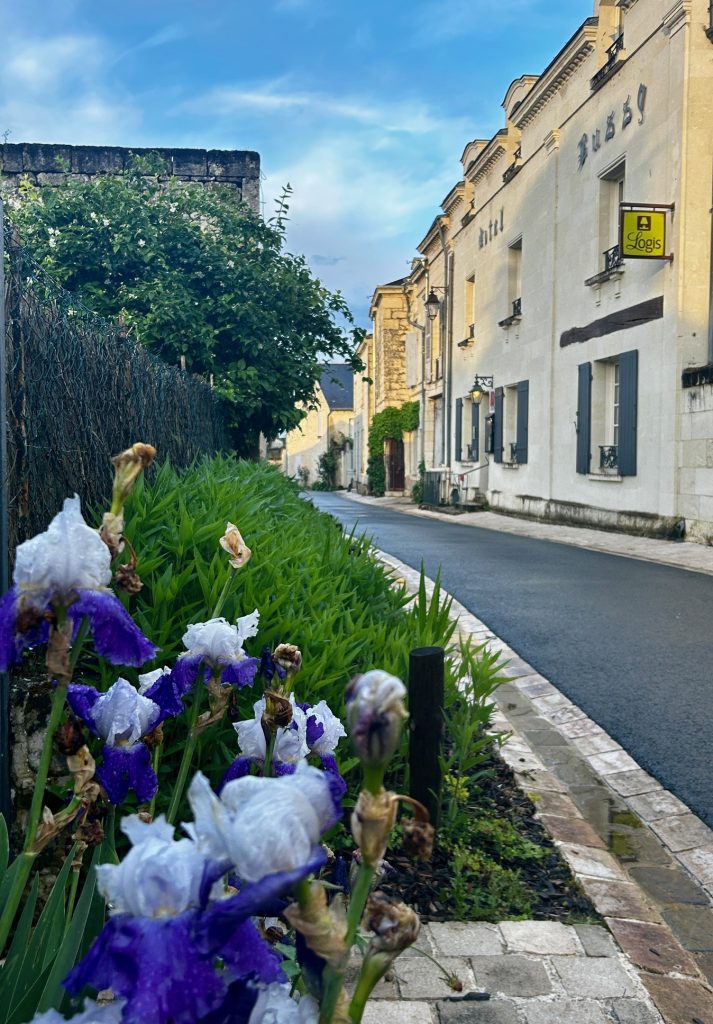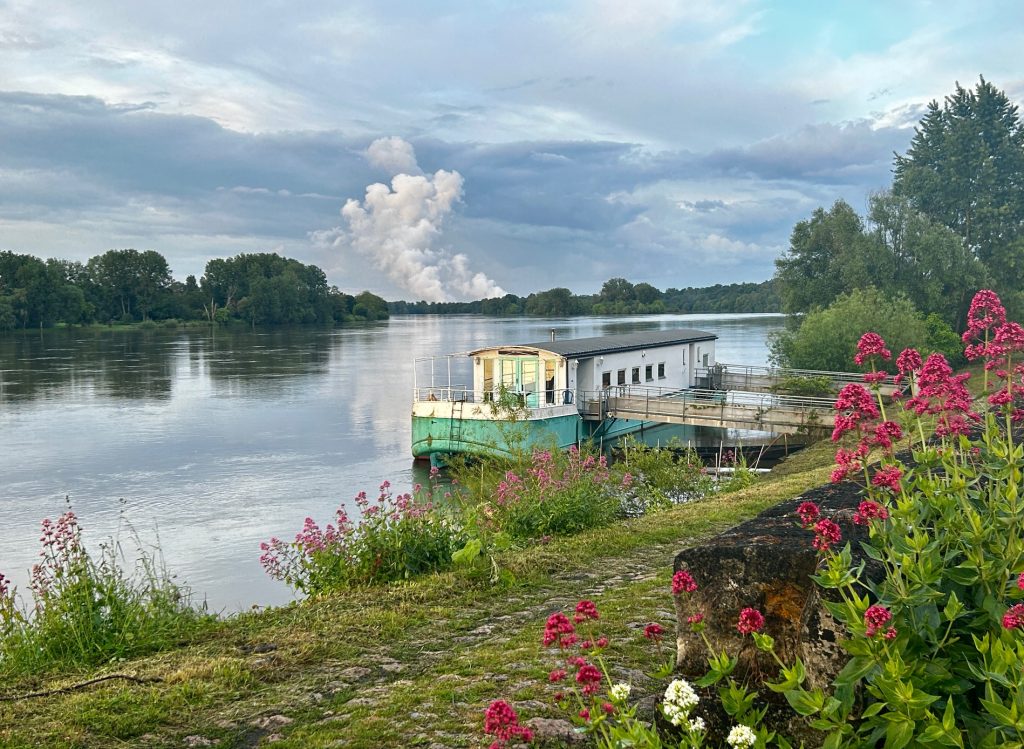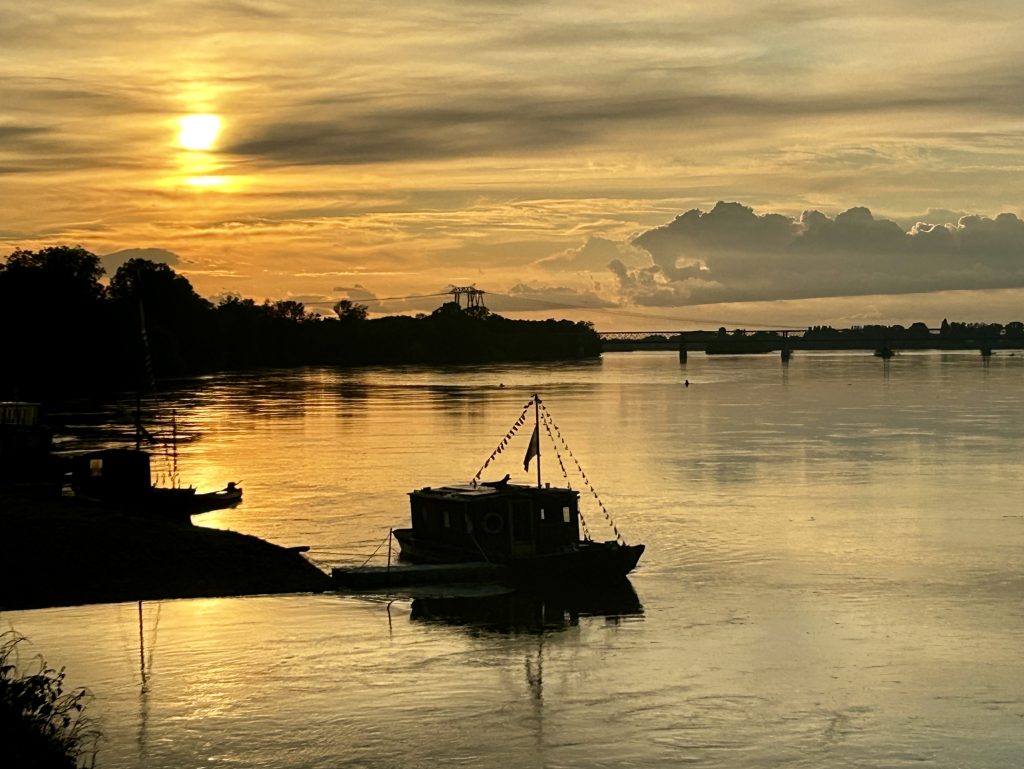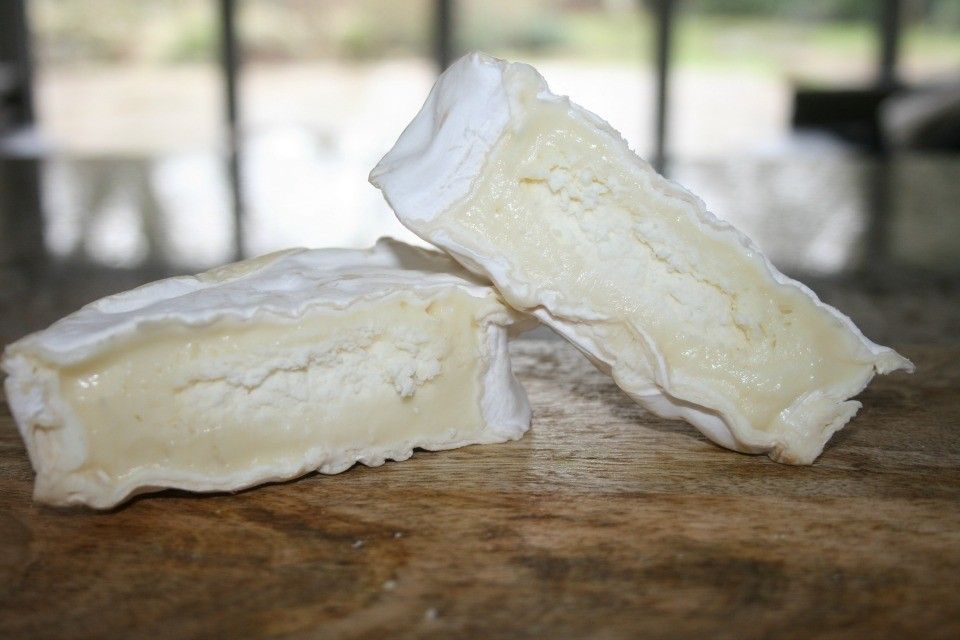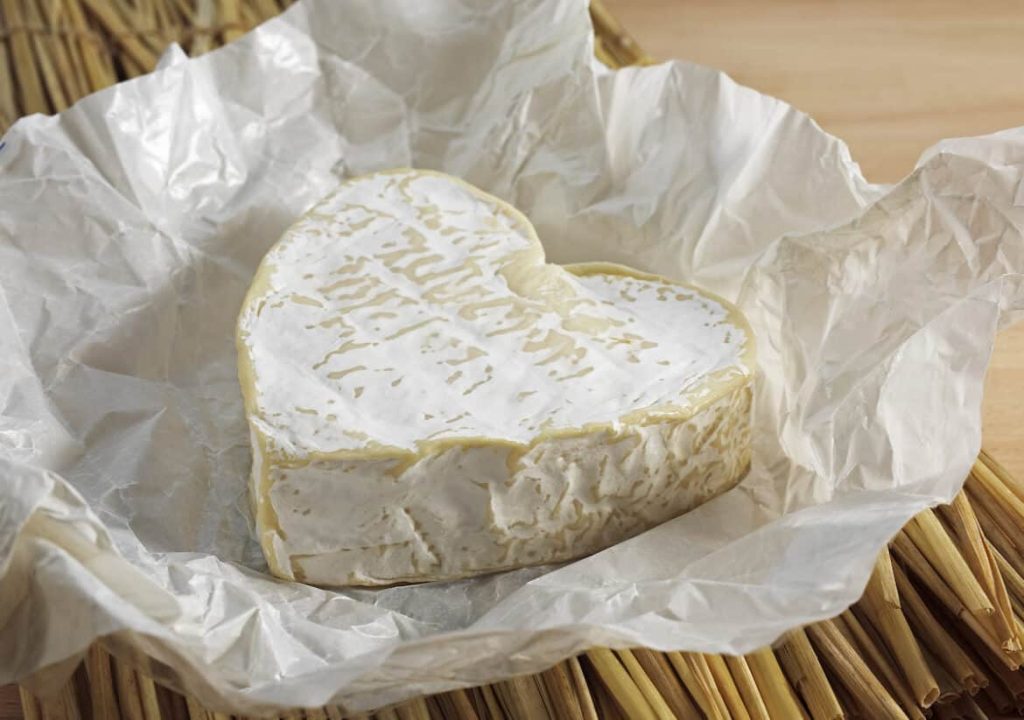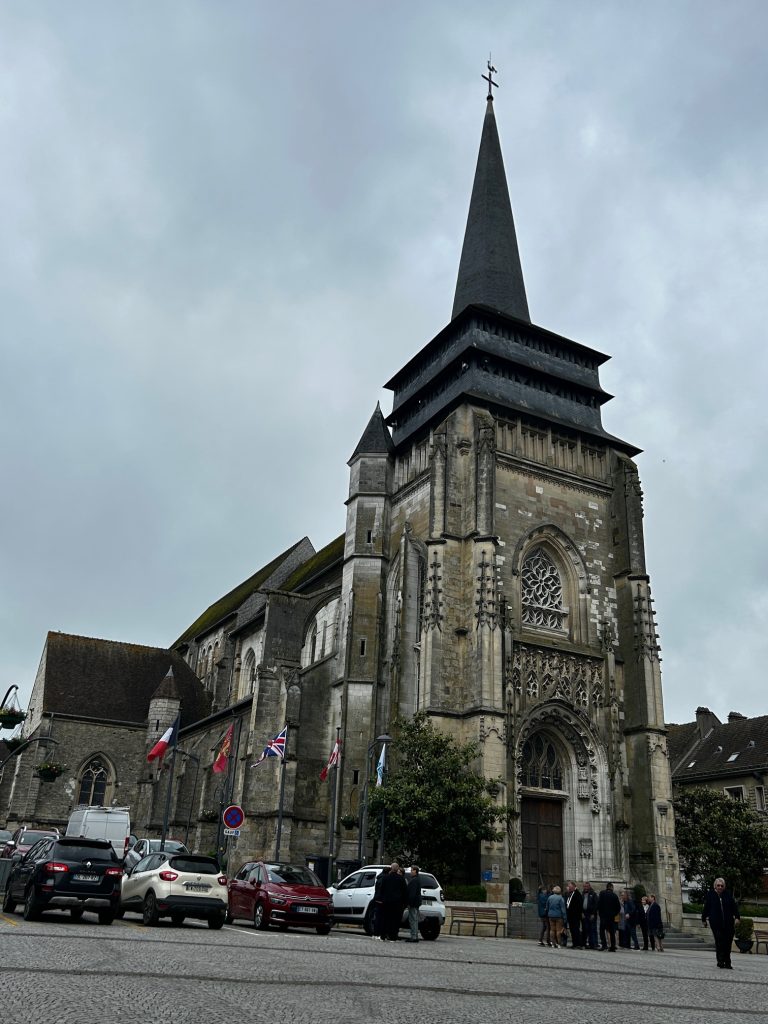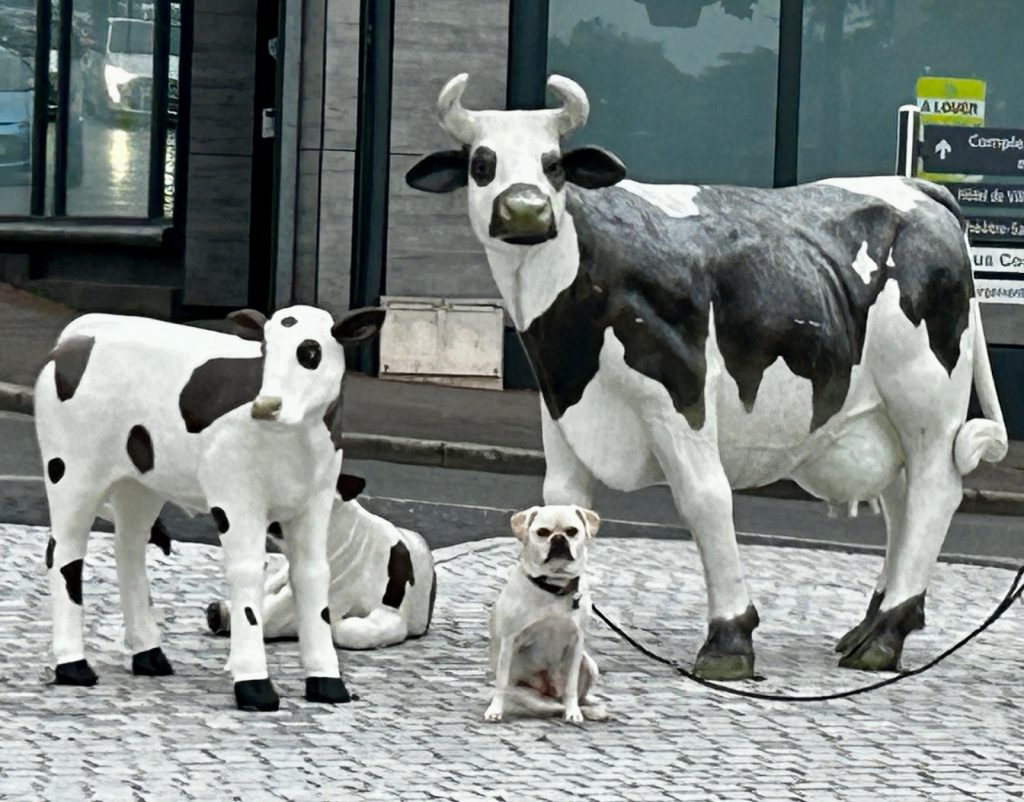We had intended staying in Montsoreau for 3 or 4 days but changed our minds and stayed a full week after learning that the Olympic Flame would be passing through the village on it’s way to Paris for the 2024 Olympics. The arrival of the Flame is a huge event for such a small village and, anyway, Montsoreau is a fine little village with plenty going on and it’s campsite, Camping Isle Verte, has all the facilities we need and more (especially having regard to Nala’s condition). We didn’t need much persuading to stay on but, what to do until the Olympic Flame arrives?
I mentioned in an earlier post that Montsoreau is well placed for us to visit a host of other villages and towns in the area. Indeed, we have already enjoyed nearby Candes Saint Martin and Turquant and I particularly enjoyed visiting the Abbey at Fontevraud. And so it happened that after Montsoreau’s Sunday Market (more about that later in a fresh post on Montsoreau), I set off, a pied, to explore a couple of other villages to the west of Montsoreau being Parnay and Souzay-Champigny. These two were never going to compare with Montsoreau, Candes Saint Martin, Turquant or Fontevraud L’Abbaye, but they each offer something of interest. Over dinner last night I enjoyed a very pleasant red wine from Parnay (a Chateau de Targe, produced by an independent winemaker, Paul Pisani-Ferry) and the waiter recommended their wines above any other in the area in terms of taste and value for money. Parnay has to be worth a visit. Just beyond Parnay is the larger village of Souzay-Champigny (over 700 inhabitants compared with less than 300 in Parnay) with it’s 12th century troglodyte shopping street – surely the first ever shopping mall?
It didn’t take me long to walk to Parnay (it is less than 3 miles from Montsoreau) but sadly the Chateau de Targe was not open for wine tasting when I arrived. Probably just as well given how much I enjoyed the wine last night. I’ll just have to revisit last night’s bar.

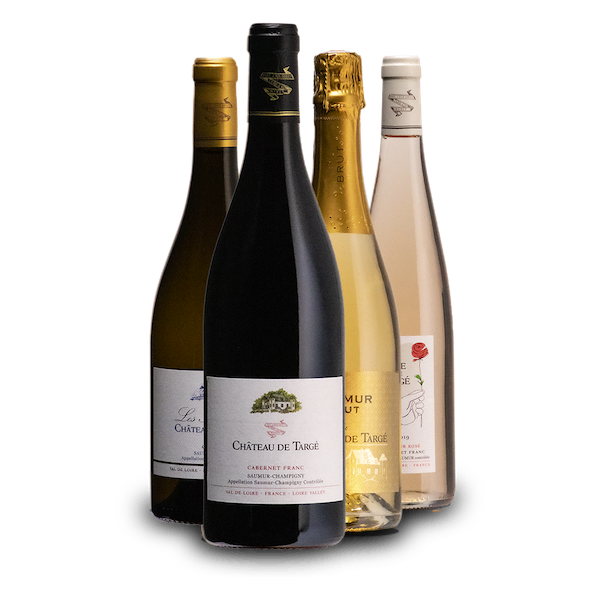
The only other thing I would say about Parnay is that the locals seem very proud of the fact it sits on the Greenwich Meridian…


On to Souzay-Champigny, which adjoins Parnay. I managed a few photographs of the troglodyte street but, I think a better time to visit the place would be in April (when an egg fair is held there) or early June (when a medieval festival takes place) or, better still in December when it holds a Christmas Market. It wasn’t being used at all during my visit and, empty, proved very disappointing. I walked all around the village but, again, it proved a disappointment There was a wedding on at the church (which I was loath to join) and so I lost those photo opportunities but, worse, I read that the most picturesque views of the village are to be taken from the small island in the Loire opposite the Town Hall and because the island was almost completely underwater (the Loire having burst it’s banks) I missed those photo opportunities too. Some other time perhaps – April, June or December, Lol.


